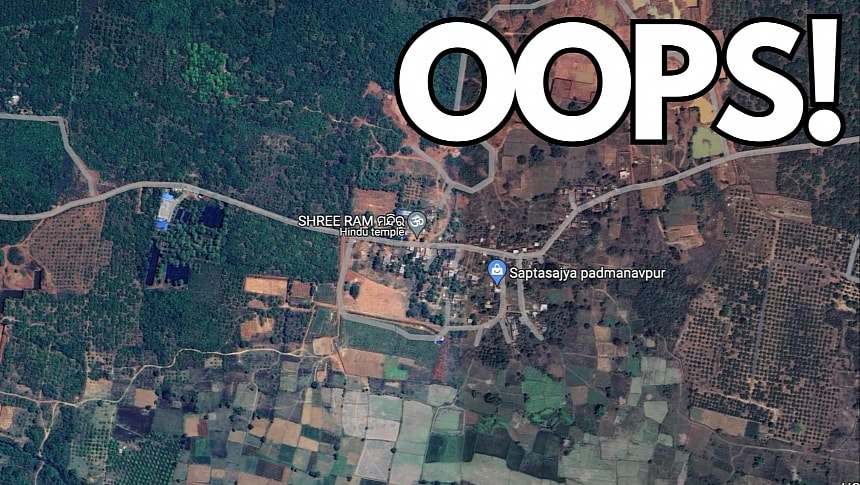Many people consider Google Maps a life-saving application because it helps them find the route to a destination in an unfamiliar place, but five students from India hoped Google's software would literally be a life-saving tool.
The five youths used their bikes to go to Saptasajya, a village in Dhenkanal that's also the home of a famous Hindu shrine.
They pedaled to the location, parked their bikes when they arrived at the destination and went inside to pray. One of the students wanted to walk to a nearby location, so the group made a little detour on their way back to their bikes.
A few minutes later, the students got lost, being surrounded by what looked like a half-forest, half-jungle. They had no idea where they were, so the first thing that popped into their minds was to pull out their phones and use Google Maps to determine their locations and find a way back to the shrine.
The students trusted Google Maps blindly – it's not like they had another option anyway – so they kept walking for approximately 10 kilometers until they got tired. It wasn't the route they hoped they'd get, so they decided to give up on Google Maps and call a friend. They still couldn't find a way out of the jungle, and after another failed attempt, they called the emergency teams.
Luckily, the students still had a cellular signal, but the search operation wasn't easy. Police looked for them from two opposite directions, paying particular attention to regions populated with reptiles and elephants. They believed the students got close to dangerous animals, so the operation continued until the middle of the night.
The students were saved 11 hours later, and police claim they were lucky not to come across elephants or other wild animals, especially at night.
While many people blame Google Maps for the mishap, it's important to know that the students wanted to use the app when they were already lost. Google Maps doesn't typically excel at hiking guidance or finding routes through the jungle, so I'm not surprised the app couldn't find a way out of the wild. If anything, the students should have used Google Maps' satellite maps to scan their surroundings and find a way out of the jungle manually without enabling navigation.
However, it's another warning that navigation apps shouldn't be taken for granted, even when you have no other option. Google Maps, Waze, Apple Maps, and the other alternatives are great software when you're on the road, but the moment you leave the pavement, you need either dedicated software or to follow the official indicators. In many cases, a traditional map is more efficient than a modern piece of software.
They pedaled to the location, parked their bikes when they arrived at the destination and went inside to pray. One of the students wanted to walk to a nearby location, so the group made a little detour on their way back to their bikes.
A few minutes later, the students got lost, being surrounded by what looked like a half-forest, half-jungle. They had no idea where they were, so the first thing that popped into their minds was to pull out their phones and use Google Maps to determine their locations and find a way back to the shrine.
The students trusted Google Maps blindly – it's not like they had another option anyway – so they kept walking for approximately 10 kilometers until they got tired. It wasn't the route they hoped they'd get, so they decided to give up on Google Maps and call a friend. They still couldn't find a way out of the jungle, and after another failed attempt, they called the emergency teams.
Luckily, the students still had a cellular signal, but the search operation wasn't easy. Police looked for them from two opposite directions, paying particular attention to regions populated with reptiles and elephants. They believed the students got close to dangerous animals, so the operation continued until the middle of the night.
The students were saved 11 hours later, and police claim they were lucky not to come across elephants or other wild animals, especially at night.
While many people blame Google Maps for the mishap, it's important to know that the students wanted to use the app when they were already lost. Google Maps doesn't typically excel at hiking guidance or finding routes through the jungle, so I'm not surprised the app couldn't find a way out of the wild. If anything, the students should have used Google Maps' satellite maps to scan their surroundings and find a way out of the jungle manually without enabling navigation.
However, it's another warning that navigation apps shouldn't be taken for granted, even when you have no other option. Google Maps, Waze, Apple Maps, and the other alternatives are great software when you're on the road, but the moment you leave the pavement, you need either dedicated software or to follow the official indicators. In many cases, a traditional map is more efficient than a modern piece of software.















